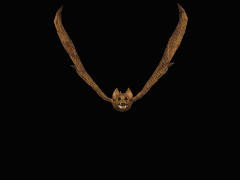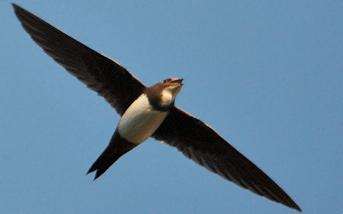


|
Apodidae:
The swifts are birds superficially similar to swallows but are actually not closely related to those passerine species at all; swifts are in the separate order Apodiformes, which they formerly shared with the hummingbirds. The resemblances between the swifts and swallows are due to convergent evolution reflecting similar life styles based on catching insects in flight. The family scientific name comes from the Greek απους, apous, meaning "without feet", since swifts have very short legs and never settle voluntarily on the ground, perching instead on vertical surfaces. The tradition of depicting swifts without feet continued into the Middle Ages, as seen in the heraldic martlet. Swifts are the most aerial of birds and some, like the Common Swift, even sleep and mate on the wing. Larger species, such as white-throated needletail, are amongst the fastest flyers in the animal kingdom. One group, the Swiftlets or Cave Swiftlets have developed a form of echolocation for navigating through dark cave systems where they roost. One species, Aerodramus papuensis has recently been discovered to use this navigation at night outside its cave roost also. Like swallows and martins, the swifts of temperate regions are strongly migratory and winter in the tropics.
Many swifts have a characteristic shape, with a short forked tail and very long swept-back wings that resemble a crescent or a boomerang. The flight of some species is characterised by a distinctive "flicking" action quite different from swallows.
The nest of many species is glued to a vertical surface with saliva, and the genus Aerodramus use only that substance, which is the basis for bird's nest soup. |
